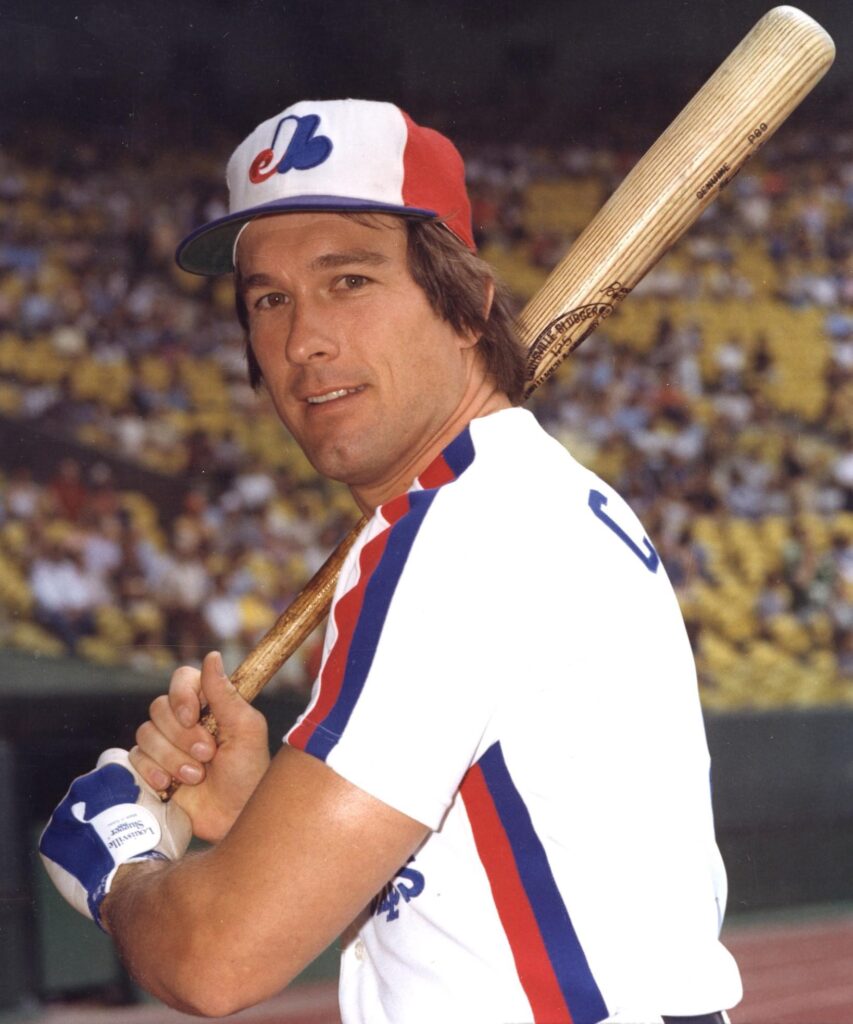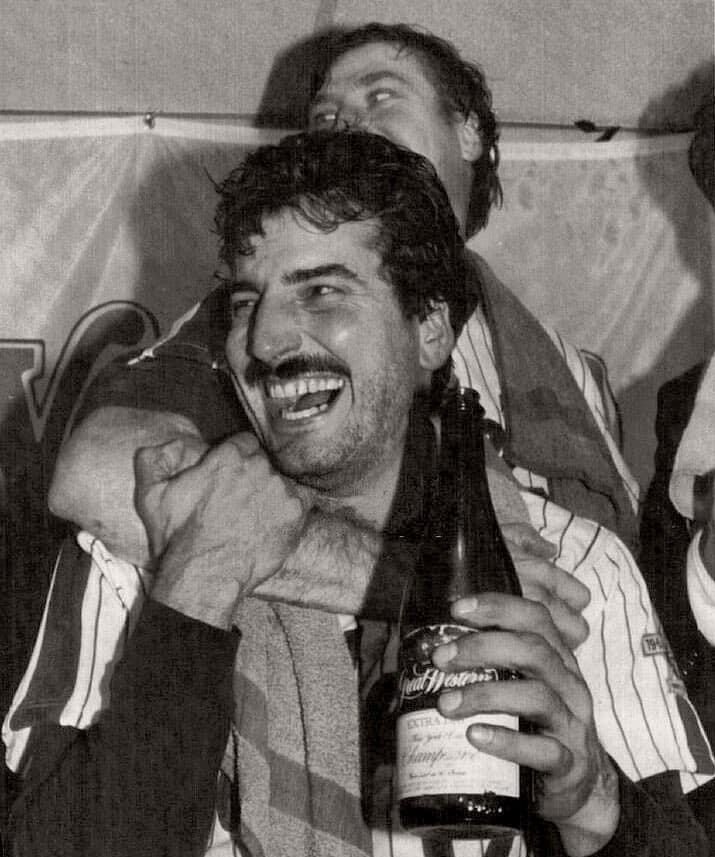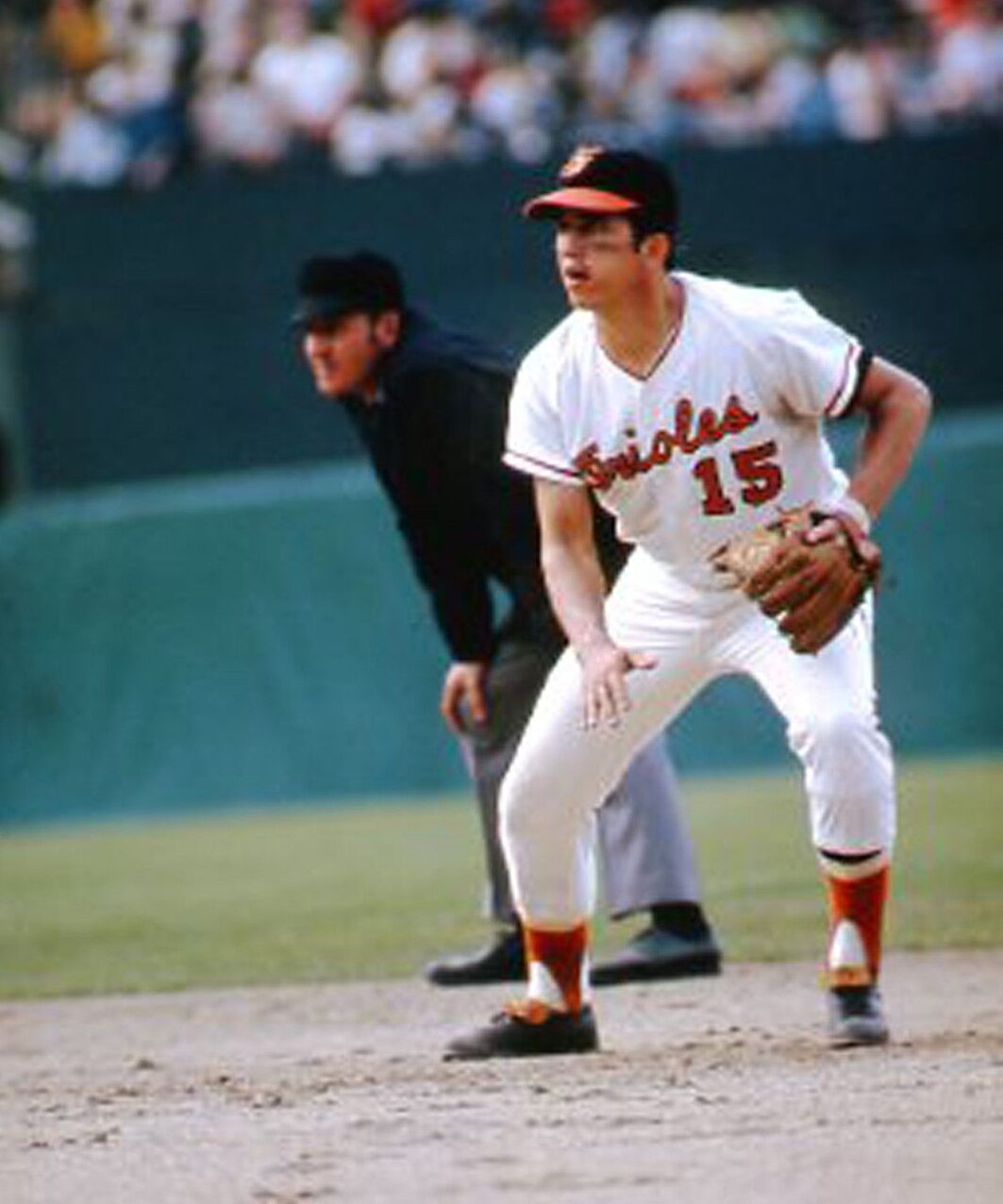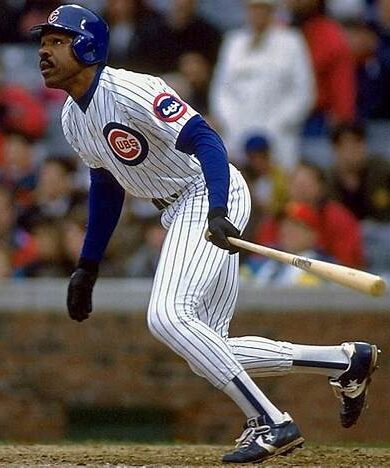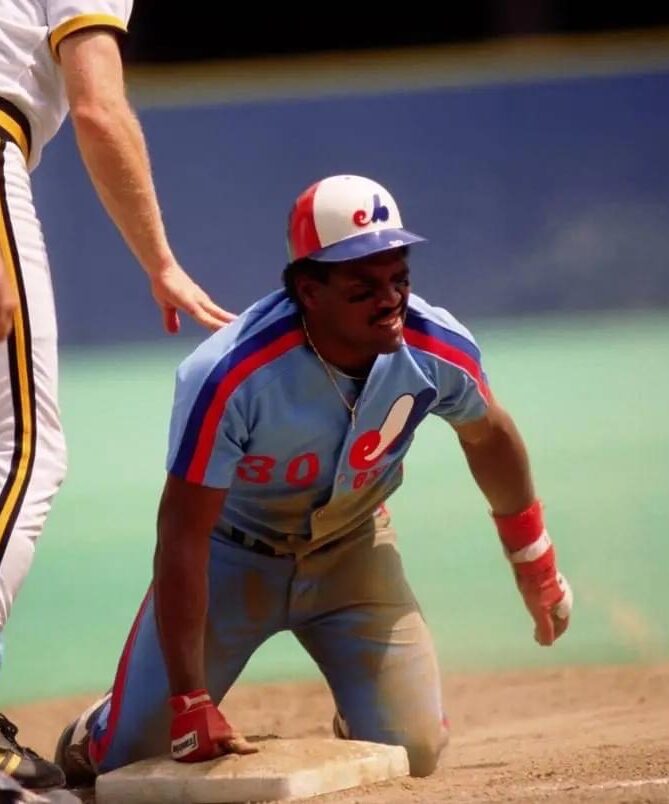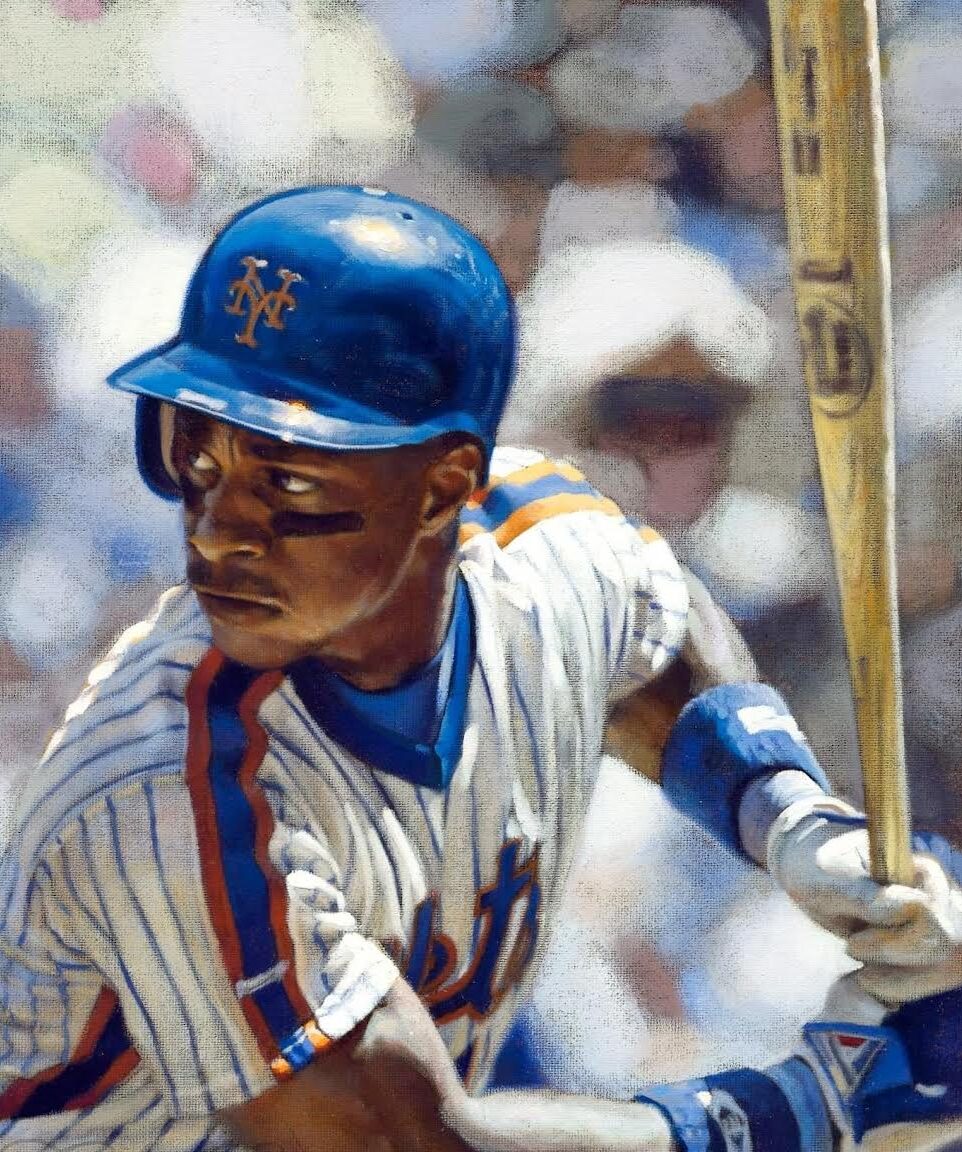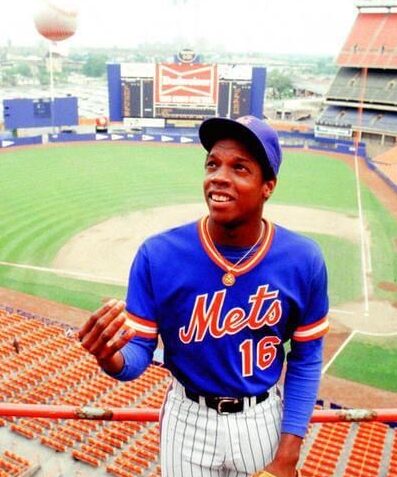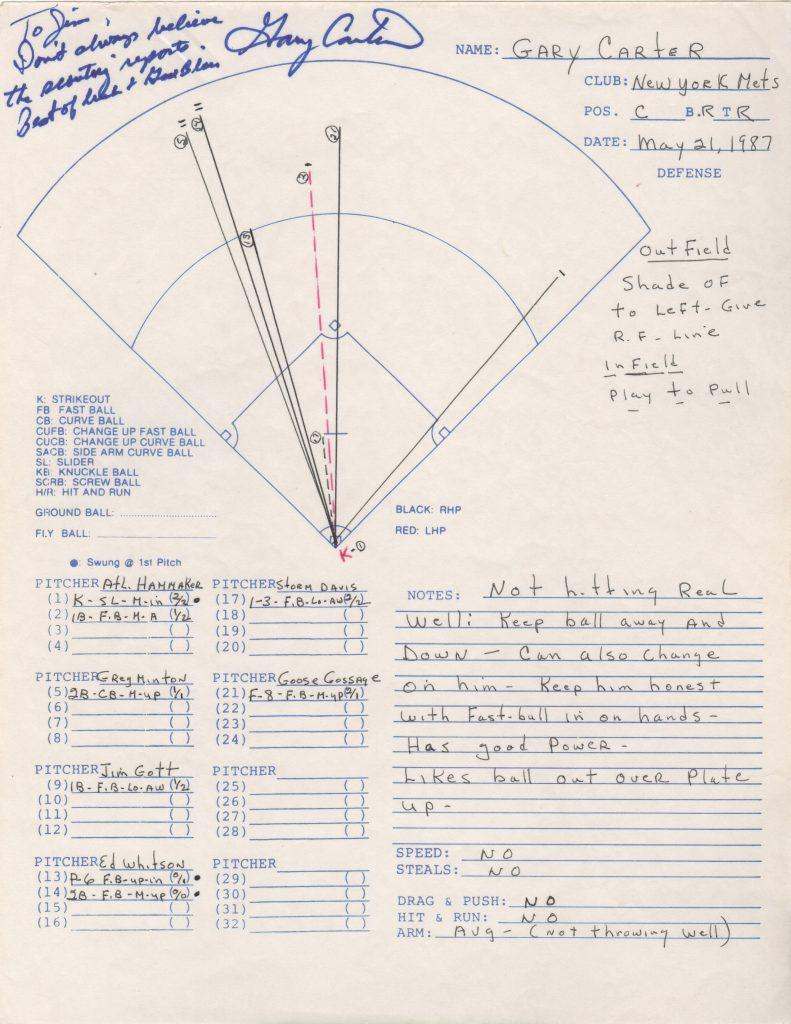
Gary Carter made an immediate impact in the big leagues. An All Star in his first full season, the catcher finished second in Rookie of the Year balloting. Four years later in 1978 Carter started a string of 10 straight All Star Game appearances.
In his dozen seasons Montreal Carter earned three Silver Slugger Awards, and three Gold Gloves. The backstop’s OPS+ north of the border stands at 121.
In December of 1984 the Expos traded him to the Mets. Carter joined a New York team laden with talent. Along with Darry Strawberry, Dwight Gooden, and Keith Hernandez, Carter helped the Mets win the ’86 World Series. Each of his first four seasons in the Big Apple were All Star campaigns.
After the Mets released him in 1989, Carter played San Francisco and Los Angeles before returning to Montreal for his final big league season.
He posted a career .262 batting average, belted 324 home runs and knocked in 1,225 runs. He earned five Silver Slugger Awards overall and was named to 11 All-Star Games. Carter twice earned the All-Star Game Most Valuable Player Award.
When Carter was inducted into Cooperstown in 2003, he became the first honoree to have an Expos cap on his plaque.
Shown here is report on the catcher turned in by an advance scout. Such scouts stay one step ahead of their teams scouting the team they’ll play next. This scouting report on Gary Carter seems less than flattering for a Hall of Famer.
Among the points written here are, “Not hitting real well”, and the rating of his throwing arm, “Avg – not throwing well”.
Those notes certainly do not reflect the entirety of his Hall of Fame career; they’re merely snapshot taken on May 21, 1987.
When asked to autograph the scouting report Carter seemed to take offense at the poor remarks as he wrote, “Don’t always believe the scouting report” just above where he penned his signature.
